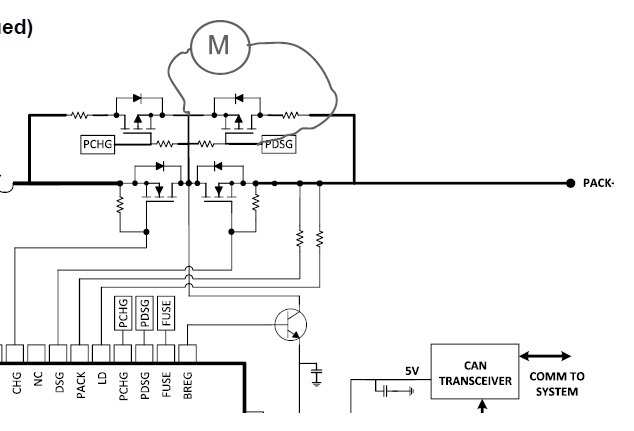Other Parts Discussed in Thread: UCC27524
HI,
I was trying to check Voltage output at respective FET pins of EVM board and following are my findings:
- CHG shows 64.2V / 53.3V
- DSG shows 64.8V / 0V
- PCHG shows 46.2V / 44.5V
- PDSG shows 46.2V / 44.5V
- DDSG and DCHG shows 5.25/0V
Although, I understand CHG, DSG, DDSG and DCHG outputs.
I am unable to understand PCHG and PDSG voltages, as datasheet states this:
I am planing to use a low side configuration for FET driving, I know how to use DCHG and DDSG for driving FETs in low side configuration, but I need some clarity on PCHG and PDSG in this regard.
Regards,
Anurag








